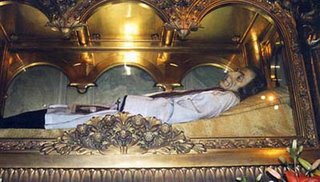 Q.
Q. Is it allowed for a parish church to held two sung masses (either one Solemn High Mass and another in Missa Cantata; or both Missa Cantata) in Extraordinary Form of the Roman rite on Sundays, important/great feasts and other holy days of obligation? Assuming that the church will only have two masses for those days mentioned.
A: It seems pretty clear that according to Summorum Pontificum, this is allowed for the typical parish, so long you are not "depriving" people who want to attend the Novus Ordo of that opportunity.
Looking at rubrics alone, indeed, you may have as many Sung (Missa Cantata) or Solemn Masses (Missa Solemnis) each day as you wish. You need to have a schola for each, so that may be a problem to get singers.
One Mass on any day is the "parochial", "community" or "conventual" Mass. This is the Mass which is the primary Mass of the day. If there is a Missa Cantata or Solemnis, the more solemn form would be automatically designated as such.
Q: If the parish church has two masses in Extraordinary Form of the Roman rite on Sunday, is it allowed that both masses have the Asperges before the mass proper?
A: The Asperges/Vidi Aquam is done only once and only on Sundays. It is done only before the principle of main Mass, as defined above. For additional Masses it is omitted. If no Sunday Mass is sung, it is omitted completely, as it is never done unless at a Sung Mass or Solemn Mass.
Q: Typically, how long does a chanted Matins and Lauds will take, assuming that it is chanted in Latin and following the 1962 Roman Breviary?
A: It varies a bit. Generally, for a feria or a third class feast (one nocturn - three lessons), Matins would take about an 45 mins- 1 hr. For major feasts (three nocturns - nine lessons), figure about 1 hr - 2 hrs. Lauds is about like Vespers, perhaps 30 - 45 mins.
Image Source: Believed to be in the Public Domain
Q&A Source: Taken from Fish Eaters Forum with permission of answerer





























.JPG)






